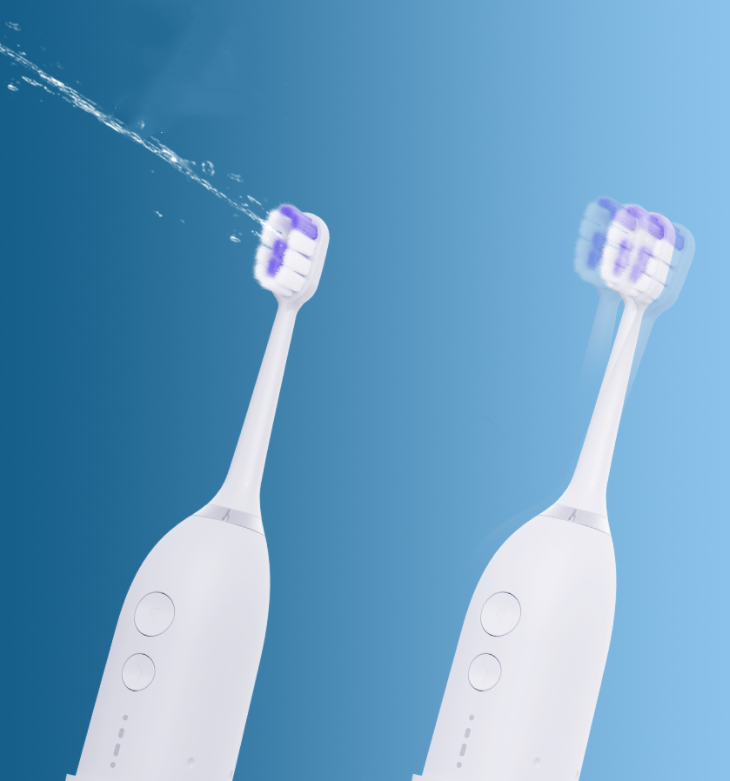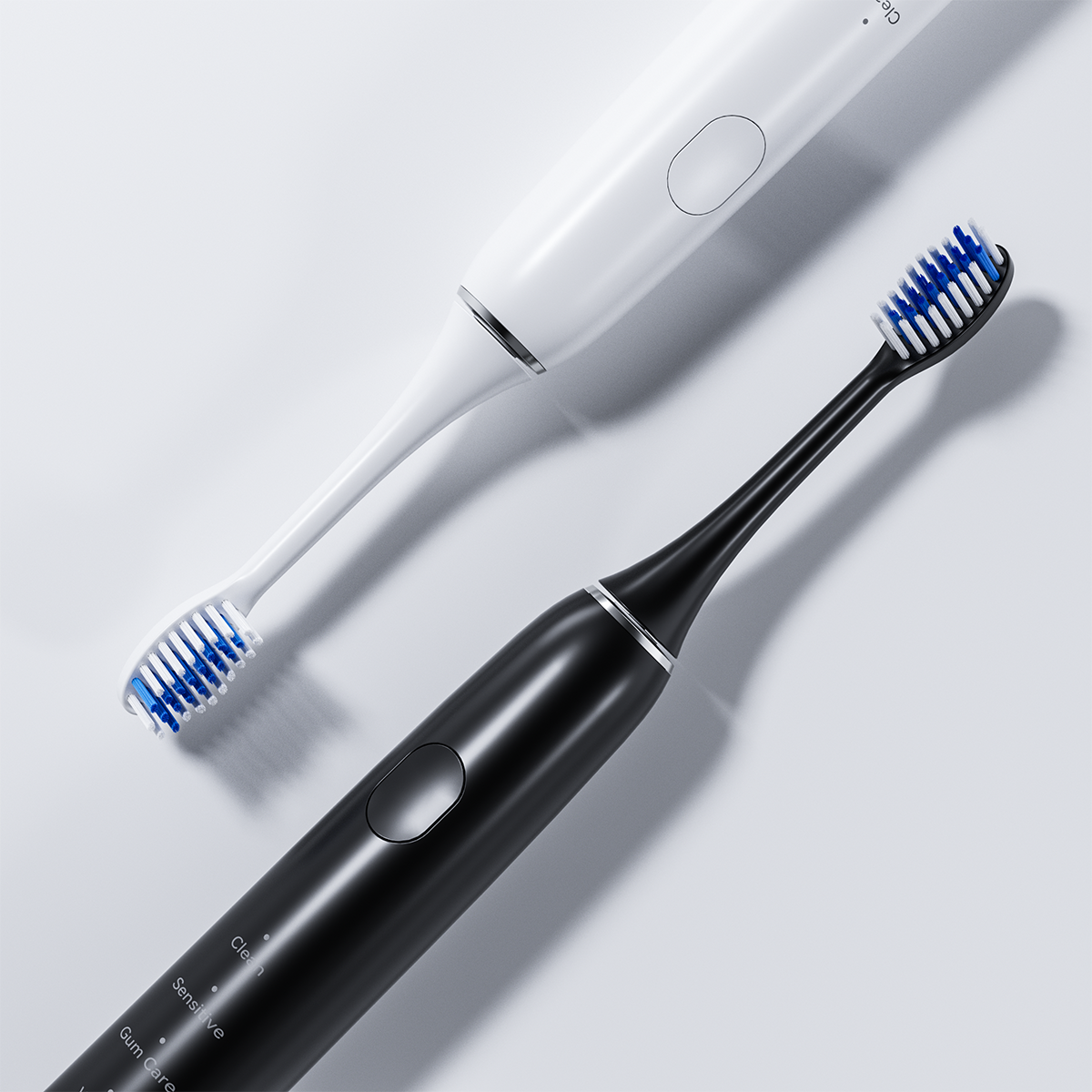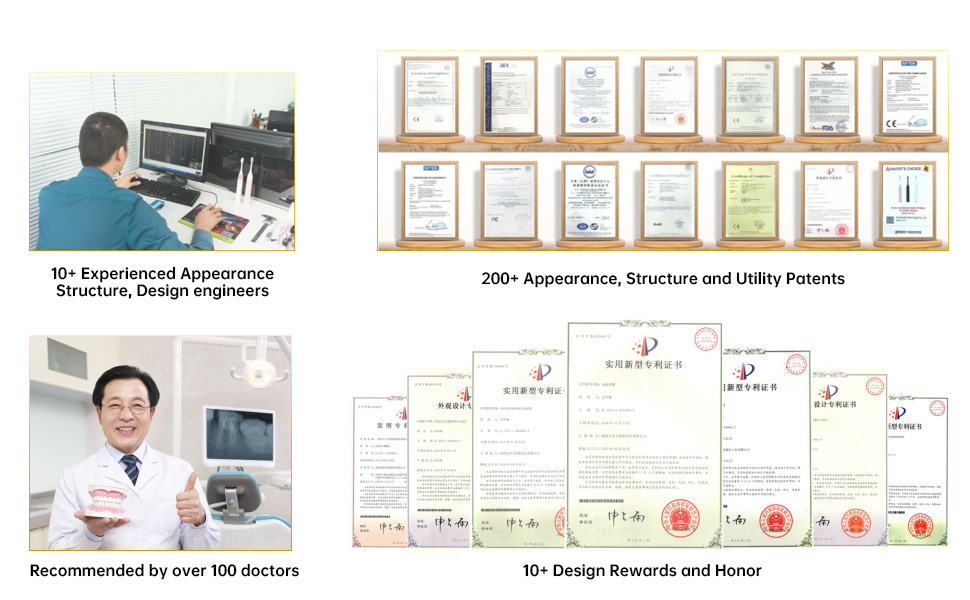For brands exploring an OEM electric toothbrush, one question comes up often: Is high-frequency vibration safe for sensitive gums and teeth? In fact, many modern toothbrushes now use 40,000 vibrations per minute to improve plaque removal and brushing efficiency.
However, this level of power can raise concerns—especially for users with sensitive teeth. Therefore, for oral care brands targeting comfort-conscious consumers, balancing cleaning performance and gentle brushing is essential.

At first, 40,000 vibrations per minute may sound aggressive. Yet, this frequency is widely used in leading toothbrush designs. Why? Because it helps remove plaque more effectively, particularly along the gum line and between teeth.
Moreover, with the right bristle design and motor control, this speed can still feel gentle. For example, soft bristles combined with rounded brush heads reduce irritation. Therefore, high-frequency vibration doesn’t always mean harsh brushing—it depends on how it’s implemented.
Not every user tolerates intense vibration well. For those with sensitive teeth or gums, discomfort may arise if the brush lacks customization.
Fortunately, many OEM electric toothbrush designs now include multiple brushing modes. Users can switch between settings like “Clean,” “Sensitive,” or “Massage.” Additionally, flexible brush heads and soft silicone materials improve comfort. These features make gentle brushing possible, even at high frequencies.
If you’re a brand looking to offer a well-balanced toothbrush, your manufacturer matters. A capable OEM electric toothbrush supplier should support adjustable vibration levels and ergonomic brush heads.
Furthermore, they should understand the needs of users with sensitive gums. Ask whether they provide mode testing, flexible motor specs, or bristle customization. This ensures the toothbrush not only cleans deeply, but also protects oral comfort.
Safety isn’t just about product specs. It also involves compliance and real-world testing. A professional manufacturer should meet certifications like CE, FDA, and RoHS.
Additionally, brands should request user feedback or clinical trial data. This helps verify that high-frequency vibration doesn’t harm gums or irritate sensitive teeth. Therefore, collaboration with a quality-driven factory is critical.
So, is high-frequency vibration harmful to gums? Not necessarily. When engineered correctly, it offers excellent cleaning while remaining gentle.
For oral care brands, the solution lies in selecting a skilled OEM electric toothbrush manufacturer. One that offers both customizable power and soft-touch design. In doing so, your brand can confidently serve both mainstream users and those needing extra care.

electric toothbrush factory evaluation standards- 5 Must-Read Criteria for Brand Owners

Four Core Factors Brand Owners Must Pay Attention to When Choosing Competitive Water Flossers
Gel Leakage Causing Chemical Burns – Still Ignoring It?

Water Flosser Toothbrush Combo: 2-in-1 Oral Care Solution
Does Noise Increase Signal Vibration Inconsistency?
Can You Tolerate Brush Head Wobble with Battery Swelling?

Oral Care Brand Expansion Guide
Can Smart Timer Improve Brushing Compliance?
How to Fix Charging Failure Plus Handle Cracking?
Allergic Reactions and Taste Alteration – Whitening’s Hidden Cost?

Magnetic Levitation Toothbrush Factory: Premium OEM Services

Top OEM Electric Toothbrush Manufacturer for Kids – Powsmart
.jpg)
Custom Children’s Electric Toothbrush Design – Soft Bristles & Food-Grade Silicone
Contact POWSMART

Is Stain Removal Rotating Brush’s Motor Corrosion a Hidden Problem?

Does Wireless Charging Toothbrush IPX7 Release Material Toxicity?

electric toothbrush heads Regular Clean

electric toothbrush heads Ultra Soft

electric toothbrush heads Charcoal Infuse-Round

Customization Teeth Whitening Gel
.jpg)
Florida Electric Toothbrush – Powsmart PTR-C8

Private Label Whitening Gel

Electric toothbrush heads Charcoal Infused-Diamond

electric toothbrush heads Deep Clean
whstapp
whstapp
National Toll-Free Service Hotline
+86 755 86238638